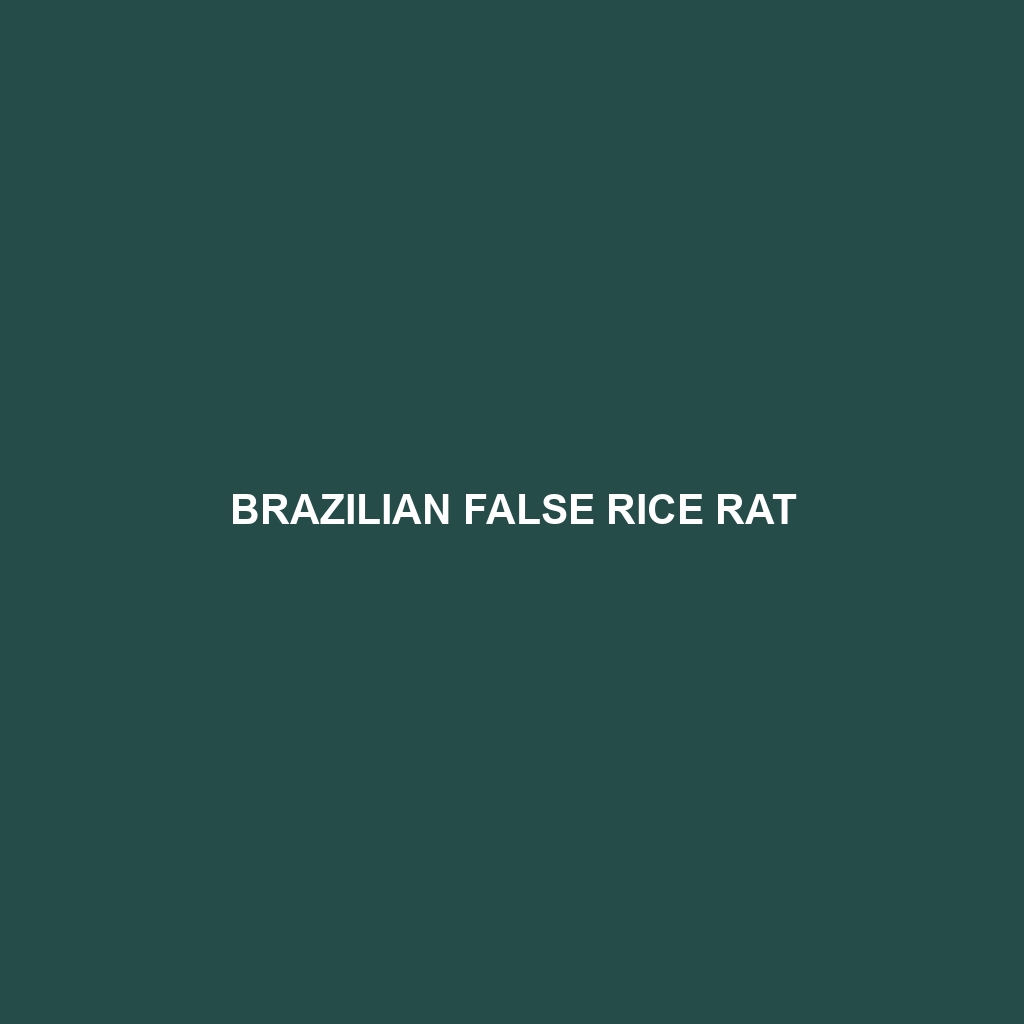Brazilian False Rice Rat
Common Name: Brazilian False Rice Rat
Scientific Name: Oecomys trinitatus
Habitat
The Brazilian False Rice Rat primarily inhabits the tropical and subtropical regions of South America, particularly in countries such as Brazil, Bolivia, and Paraguay. This species is commonly found in dense forests, grasslands, and wetlands, where it thrives in environments rich in vegetation, providing ample cover and access to food sources.
Physical Characteristics
The Brazilian False Rice Rat is a medium-sized rodent, measuring approximately 20 to 30 cm in body length, excluding the tail. Its fur is generally soft and dense, exhibiting a variety of colors ranging from dark brown to light gray, with a lighter underbelly. One distinctive feature is its elongated snout and large ears, which aid in temperature regulation and sound detection. These physical traits not only contribute to its adaptability but also enhance its ability to navigate through dense underbrush.
Behavior
This species exhibits primarily nocturnal behavior, foraging for food during the night. Brazilian False Rice Rats are known for their arboreal tendencies, often climbing trees in search of fruits and seeds. They communicate through a series of vocalizations and scent markings, establishing territories within their habitat. Socially, they tend to be solitary but can be observed in small family groups, especially during the breeding season.
Diet
The diet of the Brazilian False Rice Rat mainly consists of seeds, grains, fruits, and plant material. They are particularly fond of rice and other grains often found in agricultural areas. This species plays a crucial role in seed dispersal, aiding in plant regeneration within their ecosystem. Their diet varies seasonally, heavily influenced by the availability of different food sources throughout the year.
Reproduction
Brazilian False Rice Rats typically breed year-round, with peaks in reproduction during the wetter months. A female can give birth to a litter of 2 to 6 offspring after a gestation period of approximately 30 days. The young are born altricial, relying on their mother for nourishment and protection until they are able to fend for themselves, usually around 3 weeks of age. Parental care is predominantly provided by the female.
Conservation Status
The current conservation status of the Brazilian False Rice Rat is classified as “Least Concern” by the IUCN Red List. However, habitat destruction and agricultural expansion are potential threats that could impact their future populations. Continuous monitoring is essential to ensure that this species remains stable within its natural habitats.
Interesting Facts
The Brazilian False Rice Rat is often confused with more common species due to its similar size and coloration. A fascinating aspect of this rodent is its ability to swim well, which allows it to escape predators and access food sources in aquatic environments. Their unique adaptations and ecological significance make them a subject of interest in studies of biodiversity.
Role in Ecosystem
In its ecosystem, the Brazilian False Rice Rat serves as both a prey and a seed disperser, contributing to the balance of the food web. It plays a critical role in regulating plant populations by dispersing seeds, which promotes forest regeneration. Additionally, as a prey species, it provides sustenance to various predators, including snakes, birds of prey, and larger mammals, thus maintaining ecological harmony.
